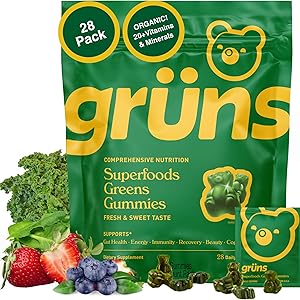Nature's Bounty Magnesium 500 mg Tablets, High Potency Magnesium Supplement for Bone & Muscle Health, Whole Body Support, 200 Count (Pack of 1)
$6.70 (as of October 25, 2025 06:13 GMT +00:00 - More infoProduct prices and availability are accurate as of the date/time indicated and are subject to change. Any price and availability information displayed on [relevant Amazon Site(s), as applicable] at the time of purchase will apply to the purchase of this product.)Understanding Dietary Fibre
Dietary fibre is an essential component of a healthy diet, found primarily in plant-based foods. It is a type of carbohydrate that the body cannot digest, which means it passes through the digestive system relatively intact. This unique characteristic allows dietary fibre to play a crucial role in maintaining digestive health, regulating blood sugar levels, and promoting a feeling of fullness. But where is dietary fibre found?
Sources of Dietary Fibre
You can find dietary fibre in a variety of foods, including fruits, vegetables, legumes, whole grains, nuts, and seeds. Each of these food groups provides different types of fibre, such as soluble and insoluble fibre. Soluble fibre, found in foods like oats and beans, dissolves in water and can help lower cholesterol levels. Insoluble fibre, present in whole grains and vegetables, adds bulk to the stool and aids in digestion.
Fruits Rich in Dietary Fibre
Fruits are a delicious and nutritious source of dietary fibre. Apples, bananas, oranges, and berries are particularly high in fibre content. For example, a medium-sized apple with its skin contains about 4 grams of fibre. Berries, such as raspberries and blackberries, are also excellent choices, providing around 8 grams of fibre per cup. Incorporating a variety of fruits into your diet can significantly boost your fibre intake.
Vegetables and Their Fibre Content
Vegetables are another important source of dietary fibre. Leafy greens, broccoli, carrots, and Brussels sprouts are packed with fibre and essential nutrients. For instance, one cup of cooked broccoli contains about 5 grams of fibre, making it a great addition to any meal. Eating a rainbow of vegetables not only enhances fibre intake but also provides a wide range of vitamins and minerals.
Whole Grains as a Fibre Source
Whole grains are a powerhouse of dietary fibre. Foods like brown rice, quinoa, barley, and whole wheat bread are excellent options. Unlike refined grains, whole grains retain their bran and germ, which are rich in fibre. For example, one slice of whole grain bread can provide around 2 grams of fibre. Including whole grains in your diet can help you meet your daily fibre requirements.
Legumes and Their Fibre Benefits
Legumes, such as lentils, chickpeas, and black beans, are among the richest sources of dietary fibre. A single cup of cooked lentils contains about 15 grams of fibre, making them an ideal choice for those looking to increase their fibre intake. Additionally, legumes are packed with protein and other essential nutrients, making them a great addition to vegetarian and vegan diets.
Nuts and Seeds for Fibre Intake
Nuts and seeds are not only a healthy source of fats but also provide a good amount of dietary fibre. Almonds, chia seeds, and flaxseeds are particularly high in fibre. For instance, just one ounce of almonds contains about 3.5 grams of fibre. Adding a handful of nuts or a sprinkle of seeds to your meals can enhance both the flavour and the fibre content of your diet.
The Role of Dietary Fibre in Health
Incorporating adequate dietary fibre into your diet is crucial for overall health. It aids in digestion, helps maintain a healthy weight, and lowers the risk of chronic diseases such as heart disease and diabetes. Furthermore, fibre can help regulate blood sugar levels, making it an important nutrient for those with diabetes. Understanding where is dietary fibre found can empower individuals to make healthier food choices.
Daily Fibre Recommendations
The recommended daily intake of dietary fibre varies by age and gender. Generally, adult women should aim for about 25 grams per day, while men should target around 38 grams. However, most people fall short of these recommendations. To increase your fibre intake, gradually incorporate more fibre-rich foods into your meals and snacks, ensuring you drink plenty of water to aid digestion.
Conclusion: The Importance of Dietary Fibre
In summary, dietary fibre is a vital part of a balanced diet, found in a variety of foods including fruits, vegetables, whole grains, legumes, nuts, and seeds. Understanding where is dietary fibre located can help individuals make informed dietary choices that promote health and well-being. By prioritizing fibre-rich foods, you can support your digestive health and overall wellness.


